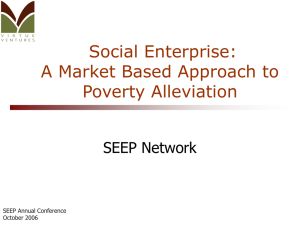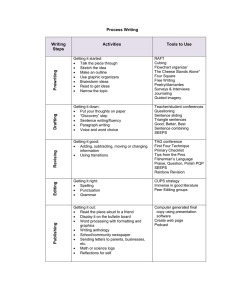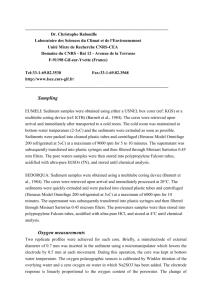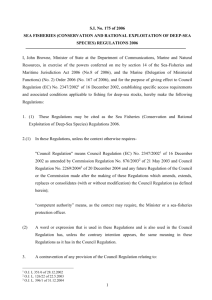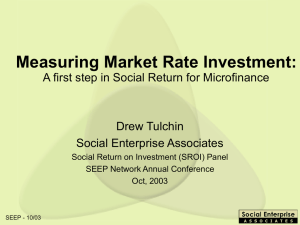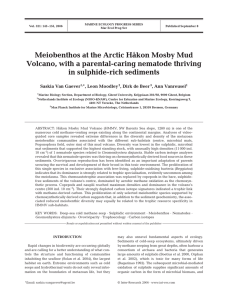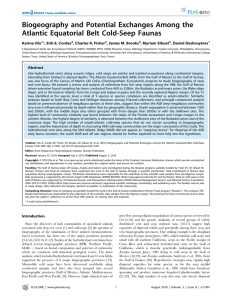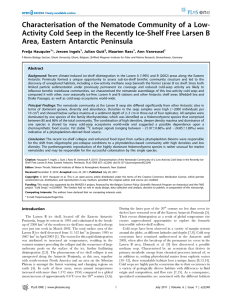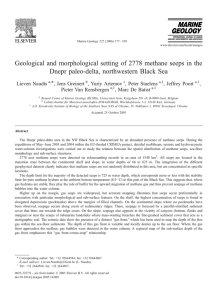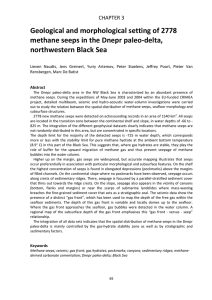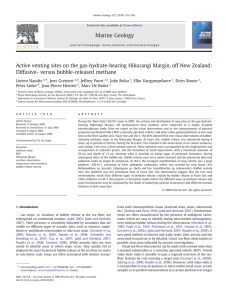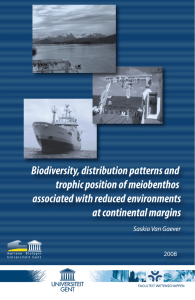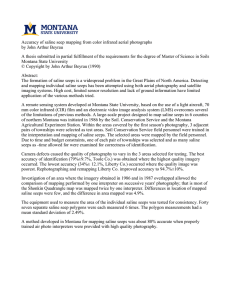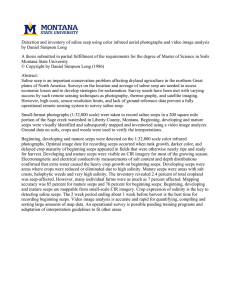MEIOFAUNA OF DEEP-SEA COLD SEEPS IN THE EASTERN BIODIVERSITY AND CONNECTIVITY
advertisement
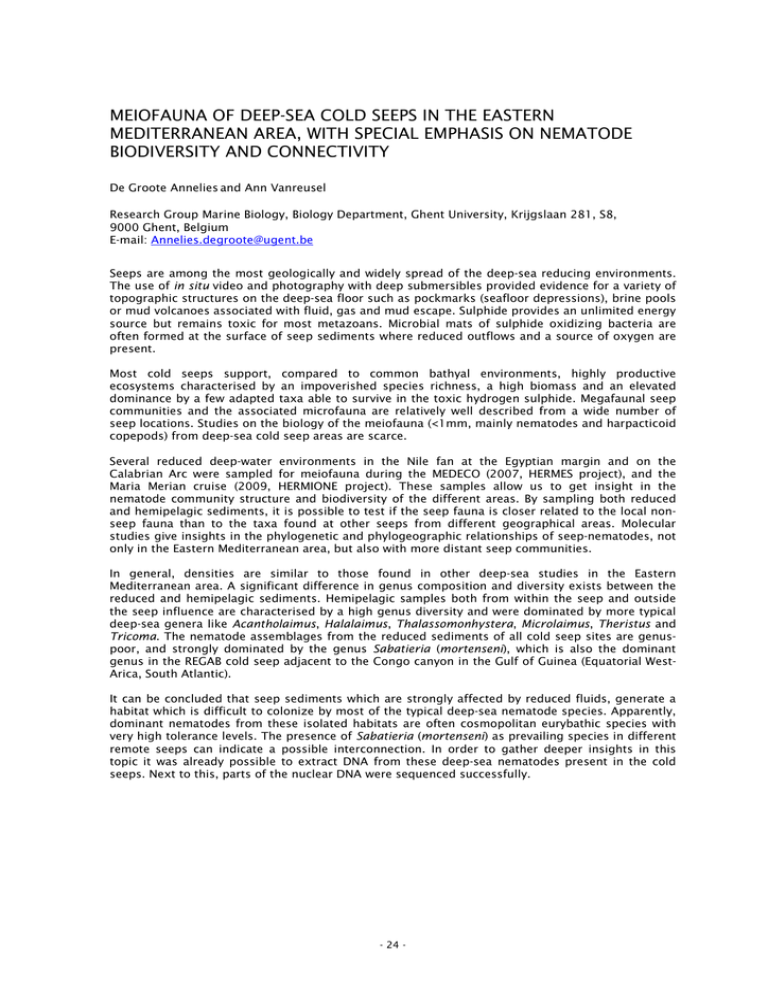
MEIOFAUNA OF DEEP-SEA COLD SEEPS IN THE EASTERN MEDITERRANEAN AREA, WITH SPECIAL EMPHASIS ON NEMATODE BIODIVERSITY AND CONNECTIVITY De Groote Annelies and Ann Vanreusel Research Group Marine Biology, Biology Department, Ghent University, Krijgslaan 281, S8, 9000 Ghent, Belgium E-mail: Annelies.degroote@ugent.be Seeps are among the most geologically and widely spread of the deep-sea reducing environments. The use of in situ video and photography with deep submersibles provided evidence for a variety of topographic structures on the deep-sea floor such as pockmarks (seafloor depressions), brine pools or mud volcanoes associated with fluid, gas and mud escape. Sulphide provides an unlimited energy source but remains toxic for most metazoans. Microbial mats of sulphide oxidizing bacteria are often formed at the surface of seep sediments where reduced outflows and a source of oxygen are present. Most cold seeps support, compared to common bathyal environments, highly productive ecosystems characterised by an impoverished species richness, a high biomass and an elevated dominance by a few adapted taxa able to survive in the toxic hydrogen sulphide. Megafaunal seep communities and the associated microfauna are relatively well described from a wide number of seep locations. Studies on the biology of the meiofauna (<1mm, mainly nematodes and harpacticoid copepods) from deep-sea cold seep areas are scarce. Several reduced deep-water environments in the Nile fan at the Egyptian margin and on the Calabrian Arc were sampled for meiofauna during the MEDECO (2007, HERMES project), and the Maria Merian cruise (2009, HERMIONE project). These samples allow us to get insight in the nematode community structure and biodiversity of the different areas. By sampling both reduced and hemipelagic sediments, it is possible to test if the seep fauna is closer related to the local nonseep fauna than to the taxa found at other seeps from different geographical areas. Molecular studies give insights in the phylogenetic and phylogeographic relationships of seep-nematodes, not only in the Eastern Mediterranean area, but also with more distant seep communities. In general, densities are similar to those found in other deep-sea studies in the Eastern Mediterranean area. A significant difference in genus composition and diversity exists between the reduced and hemipelagic sediments. Hemipelagic samples both from within the seep and outside the seep influence are characterised by a high genus diversity and were dominated by more typical deep-sea genera like Acantholaimus, Halalaimus, Thalassomonhystera, Microlaimus, Theristus and Tricoma. The nematode assemblages from the reduced sediments of all cold seep sites are genuspoor, and strongly dominated by the genus Sabatieria (mortenseni), which is also the dominant genus in the REGAB cold seep adjacent to the Congo canyon in the Gulf of Guinea (Equatorial WestArica, South Atlantic). It can be concluded that seep sediments which are strongly affected by reduced fluids, generate a habitat which is difficult to colonize by most of the typical deep-sea nematode species. Apparently, dominant nematodes from these isolated habitats are often cosmopolitan eurybathic species with very high tolerance levels. The presence of Sabatieria (mortenseni) as prevailing species in different remote seeps can indicate a possible interconnection. In order to gather deeper insights in this topic it was already possible to extract DNA from these deep-sea nematodes present in the cold seeps. Next to this, parts of the nuclear DNA were sequenced successfully. - 24 -

